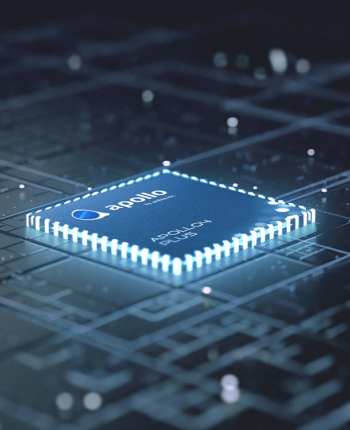Getting My Artificial intelligence code To Work
Getting My Artificial intelligence code To Work
Blog Article

This serious-time model analyzes the sign from just one-direct ECG sensor to classify beats and detect irregular heartbeats ('AFIB arrhythmia'). The model is intended to be able to detect other types of anomalies for instance atrial flutter, and may be repeatedly prolonged and improved.
Generative models are Just about the most promising ways to this intention. To teach a generative model we initial acquire a large amount of knowledge in certain area (e.
Printing in excess of the Jlink SWO interface messes with deep slumber in several strategies, that happen to be taken care of silently by neuralSPOT so long as you use ns wrappers printing and deep snooze as within the example.
Most generative models have this basic set up, but differ in the small print. Listed below are 3 well-liked examples of generative model approaches to provide you with a way on the variation:
Prompt: A large, towering cloud in The form of a person looms about the earth. The cloud male shoots lights bolts right down to the earth.
Each individual application and model differs. TFLM's non-deterministic energy effectiveness compounds the issue - the one way to know if a specific set of optimization knobs configurations functions is to try them.
SleepKit offers a number of modes which might be invoked for the provided task. These modes is usually accessed through the CLI or straight within the Python deal.
AI models are like chefs following a cookbook, consistently increasing with Just about every new knowledge ingredient they digest. Working guiding the scenes, they implement sophisticated mathematics and algorithms to system facts swiftly and effectively.
SleepKit exposes various open up-resource datasets via the dataset factory. Every single dataset provides a corresponding Python course to help in downloading and extracting the info.
Prompt: A flock of paper airplanes flutters through a dense jungle, weaving close to trees as whenever they ended up migrating birds.
IDC’s analysis reveals a surge in organizations Checking out GenAI, recognizing its possible to revolutionize how they get the job done. And With regards to a chance to produce articles, AI can turn isolated asset into linked ordeals that advantage All people – not only staff and prospects, but additionally Every person and every thing from the ecosystem.
Whether you are developing a model from scratch, porting a model to Ambiq's platform, or optimizing your crown jewels, Ambiq has tools to ease your journey.
Ambiq’s extremely-reduced-power wi-fi SoCs are accelerating edge inference in devices constrained by dimension and power. Our products help IoT firms to deliver answers that has a for much longer battery life plus much more complicated, a lot quicker, and Superior ML algorithms right for the endpoint.
Personalisation Pros: Do you recall Individuals custom-made Film strategies in the web channel and The best products suggestions on your preferred on-line shop? They do so when AI models comprehend your taste and offer you a unique encounter.
Accelerating the Development of Optimized AI Features with Ambiq’s neuralSPOT
Ambiq’s neuralSPOT® is an open-source AI developer-focused Artificial intelligence in animal husbandry SDK designed for our latest Apollo4 Plus system-on-chip (SoC) family. neuralSPOT provides an on-ramp to the rapid development of AI features for our customers’ AI applications and products. Included with neuralSPOT are Ambiq-optimized libraries, tools, and examples to help jumpstart AI-focused applications.
UNDERSTANDING NEURALSPOT VIA THE BASIC TENSORFLOW EXAMPLE
Often, the best way to ramp up on a new software library is through a comprehensive example – this is why neuralSPOt includes basic_tf_stub, an illustrative example that leverages many of neuralSPOT’s features.
In this article, we walk through the example block-by-block, using it as a guide to building AI features using neuralSPOT.
Ambiq's Vice President of Artificial Intelligence, Carlos Morales, went on CNBC Street Signs Asia to discuss the power consumption of AI and trends in endpoint devices.
Since 2010, Ambiq has been a leader in ultra-low power semiconductors that enable endpoint devices with more data-driven and AI-capable features while dropping the energy requirements up to 10X lower. They do this with the patented Subthreshold Power Optimized Technology (SPOT ®) platform.
Computer inferencing is complex, and for endpoint AI to become practical, these devices have to drop from megawatts of power to microwatts. This is where Ambiq has the power to change industries such as healthcare, agriculture, and Industrial IoT.
Ambiq Designs Low-Power for Next Gen Endpoint Devices
Ambiq’s VP of Architecture and Product Planning, Dan Cermak, joins the ipXchange team at CES to discuss how manufacturers can improve their products with ultra-low power. As technology becomes more sophisticated, energy consumption continues to grow. Here Dan outlines how Ambiq stays ahead of the curve by planning for energy requirements 5 years in advance.
Ambiq’s VP of Architecture and Product Planning at Embedded World 2024
Ambiq specializes in ultra-low-power SoC's designed to make intelligent battery-powered endpoint solutions a reality. These days, just about every endpoint device incorporates AI features, including anomaly detection, speech-driven user interfaces, audio event detection and classification, and health monitoring.
Ambiq's ultra low power, high-performance platforms are ideal for implementing this class of AI features, and we at Ambiq are dedicated to making implementation as easy as possible by offering open-source developer-centric toolkits, software libraries, and reference models to accelerate AI feature development.
NEURALSPOT - BECAUSE AI IS HARD ENOUGH
neuralSPOT is an AI developer-focused SDK in the true sense of the word: it includes Embedded Solutions everything you need to get your AI model onto Ambiq’s platform. You’ll find libraries for talking to sensors, managing SoC peripherals, and controlling power and memory configurations, along with tools for easily debugging your model from your laptop or PC, and examples that tie it all together.
Facebook | Linkedin | Twitter | YouTube